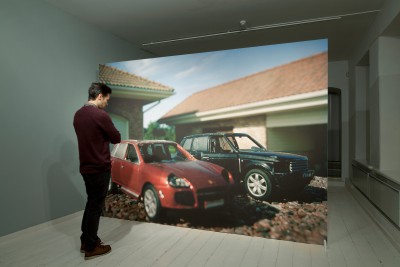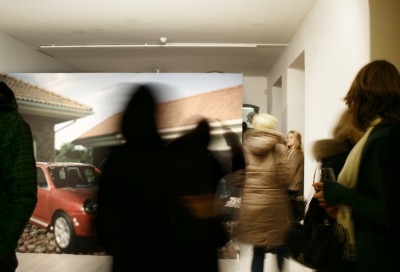Paul Kuimet & Laura Toots "Not Necessarily So", 14 December 2012 – 10 February 2013

Proposal for a Rethinking of the Roles
Concerns with the alienation of the general public from conceptual art practices tend to call for adjustments in the way art is mediated by its institutions and critics as a possible solution. The rate of public participation, it seems, will depend on how the former deal with making art accessible and the latter with making it understandable. Given institutions fulfill their task of providing venues and programs that are economically, socially and geographically approachable, the pressure falls on the critic to interpret the coded language of contemporary art to the presumably ignorant viewer. Often, this will entail matching the visual content of an art work with conceptual information that it possibly refers to, be it a historical fact, philosophical quotation or a political statement. Considering that art criticism—unlike art history or semiotics—is a relatively new discipline in Estonia that, strictly speaking, suffers from a lack of professionals, it is important to address from the outset what such pressure to interpret implies. For it affects not only the role assigned to the critic, but consequently most positions involved in the production and consumption of art. There is undoubtedly a need for providing the tools for at least a basic understanding of contemporary art. However, seeing the critic as the fulfiller of this task may be debilitating to all roles involved in the enactment of this understanding. To believe that art requires a critic on a fundamental level of interpretation, would be to think of an artist as someone who produces work for the purpose of interpretation. That is, someone who merely assigns visual form to ideas and references that the critic will later have to dig out again. In such instance, the critic himself is only as good as his knowledge of art history is extensive. Criticism turns into an almost mechanic process of matching visual codes with academic facts. To be sure, of such mechanic writing many examples exist in art criticism. And let's think further about the art work, which in such a situation is only a testament to its own production, irrelevant and misunderstood until appropriate mediation is performed. The viewer’s position is equally infirm, awaiting the critic as a remedy for its weakness. At bottom, the outcome of such interpretative practices, regardless of the levels of their objectivity, will also prove unsatisfying. For it would be wrong to think that analysis appears out of mere juxtaposition of what is shown and its reference. Providing the tools to see what one is looking at may expose what is present, but is unlikely to introduce new forms of visibility. A more emancipating method would imply a rethinking of all the roles in such a way that each is being empowered. It may begin with assigning the task of basic introduction to art historical or other possibly useful references to educational processes (without limiting this task to merely teaching children to produce metaphors, but to trigger associative thinking as well). Equipped with—first and foremost—an openness toward contemporary art that would stem from this knowledge, the viewer will be prepared to enter the exhibition space not to seek an explanation from a critic, but to meet the artwork. This will imply that the work is able to reveal itself to the viewer on its own terms. Its relationship with the space, its producers, viewers, its medium will be arranged in such a way that intervenes in the usual logic of things, producing a shift (as opposed to merely proposing a slogan that points towards something or references the already prevailing logic of things). It needs to recognize its own power as an object in a space and in situation. The artist will then be responsible to create in such a way that will put the object, the space and the occurrence in play without defined rules. The unpredictability that this implies, will force the critic to be more creative and apply more poetic means of critique. Finally, the viewers will enter not a stagnant narrative, where they are the last instance, a receiver, but an active space in which they can participate in the political process of making things visible, a space with a potential for appearance.


